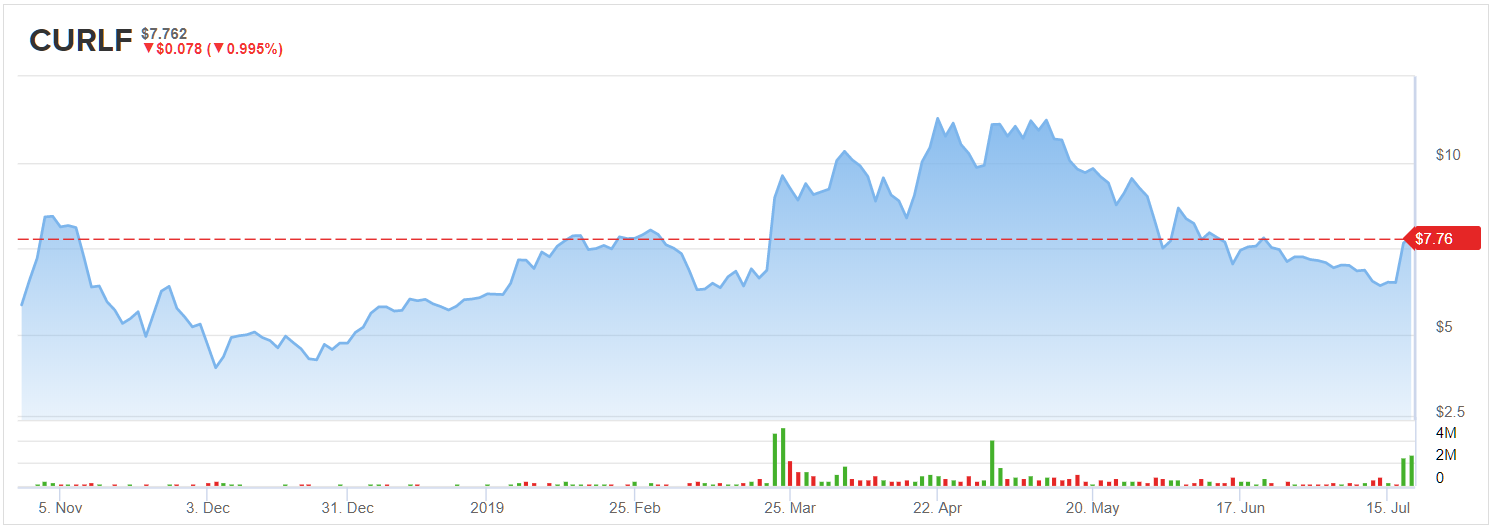The announcement by Curaleaf Holdings (CURLF) that it will acquire U.S. based GR Companies (Grassroots) for $875 million, garnered a lot of attention. Curaleaf may be poised to become the most recognized name in the U.S. cannabis sector, which will definitely be beneficial for attracting investors, in a similar it has been for Canopy Growth in the early stages of the rapidly growing industry. It is also following a similar aggressive growth strategy that Aurora Cannabis has used to add valuable assets that will pay off in significant growth over the long haul.

Details of the deal
Curaleaf will pay $875 million Grassroots, with $75 million of that in cash, $40 million in Curaleaf shares, and 102.8 million subordinate voting shares of Curaleaf.
What Curaleaf receives from the deal will an expansion from its current presence in 12 states, to another seven states, allowing it to compete in 19 U.S. states.
The more important new markets it’ll be entering include Illinois, Michigan and Pennsylvania. Other new markets it’ll compete in are Arkansas, North Dakota, Oklahoma and Vermont. Markets that will have some overlap are Connecticut, Maryland, Nevada and Ohio.
After closing, the company will have 131 dispensary licenses, 68 locations it operates in, 26 processing facilities, and 20 cultivation sites.
One of the key benefits of the deal is the new markets it competes in have little overlap with its existing business, which means there will be little cannabilization of existing sales.
World’s biggest cannabis company?
Curaleaf CEO Joseph Lusardi claims when this deal and the pending acquisition of Select are closed, it’ll make Curaleaf the largest cannabis company in the world as measured by operating presence and revenue. I do dispute the idea it is the largest based upon operating presence, as Aurora Cannabis, based upon only Canada, Germany and Italy, has as much exposure to a similar addressable market of about 177 million that Curaleaf will have after these deals are closed. And Aurora Cannabis has a number of other markets it competes in that add to that number.
Lusardi wasn’t clear in the interview I watched where he made the claim, so he may have been making a reference to recreational pot. If so, I wouldn’t have a problem with his assertion if it’s based upon adult-use cannabis. That’s because there are few countries in the world that have legalized recreational pot.
Nonetheless, even if Lusardi is getting ahead of himself a little, it doesn’t take away from the fact these deals are going to propel it more into the media cycles, and it could lead it to having an important place in the overall industry if it becomes the U.S. face of the cannabis sector.
That could be even more important over the long term than the financial benefits of the deals, assuming it’s able to execute.
Conclusion
The U.S. cannabis sector has played second fiddle to the Canadian cannabis market because of the media coverage surrounding legalization of recreational pot in the latter part of 2018. That has resulted in less coverage and interest in the U.S. industry, but that is changing as MSOs grow in size as the U.S. marijuana industry continues to consolidate.
By getting aggressive in its growth strategy, Curaleaf appears to have positioned itself as the face of the industry in America, which as mentioned earlier, could give it the initial benefit that Canopy Growth enjoyed for some time, until recently. This should provide it some momentum over the next 3 quarters or so.
What has yet to happen, and it won’t until the dust settles after the deals are closed, is the market will start to scrutinize the deals much more, and look at the cost/benefit analysis associated with dilution and long-term liabilities.
As Curaleaf stands today, I’m in favor of its strategy, but it does have to be careful not to get too optimistic about its prospects in the near term, as there are still plenty of things that could disrupt its expected growth trajectory. For example, New York and New Jersey declining to legalize adult-use pot.
But based upon its existing assets after the two major deals are closed, Curaleaf should have some significant share price growth going forward. Even so, there are still a lot of things at the infrastructure level in the U.S. that are limiting in regard to scale, and regulations concerning selling across state lines remain a factor.
Still, based upon the parameters of the hand the U.S. governments has handed it, Curaleaf has taken a big step that should benefit shareholders. If it does manage to position itself as the face of the U.S. cannabis industry, it should be able to leverage these deals beyond their earnings potential. That would boost its value even more.
To read more on the nitty gritty of what’s going on in the rising cannabis industry, click here.
Disclosure: The author is Long Aurora stock.